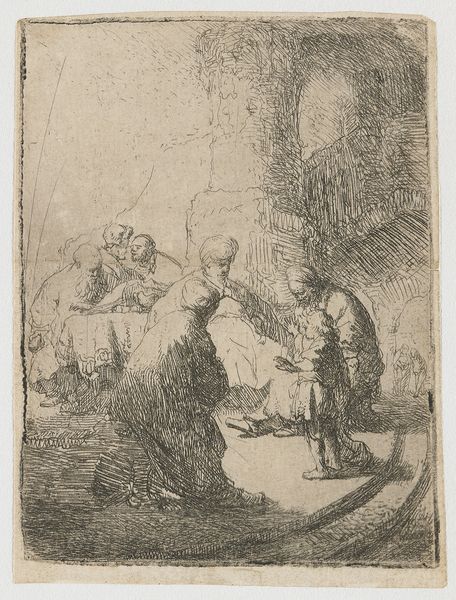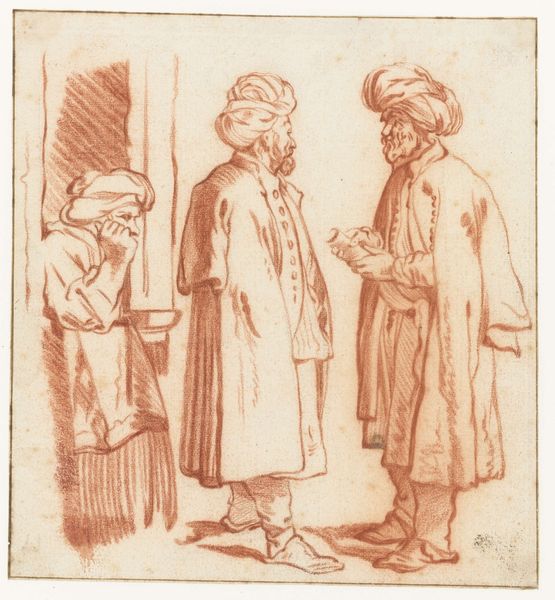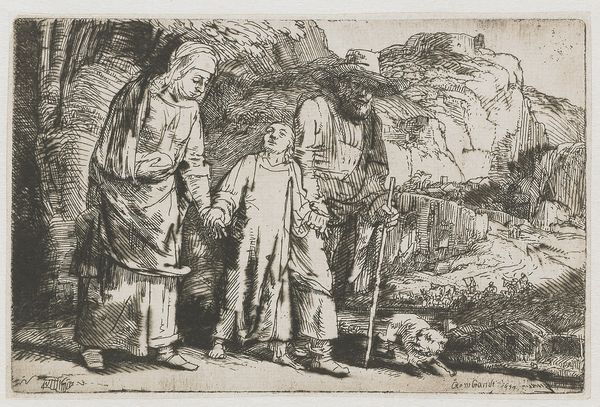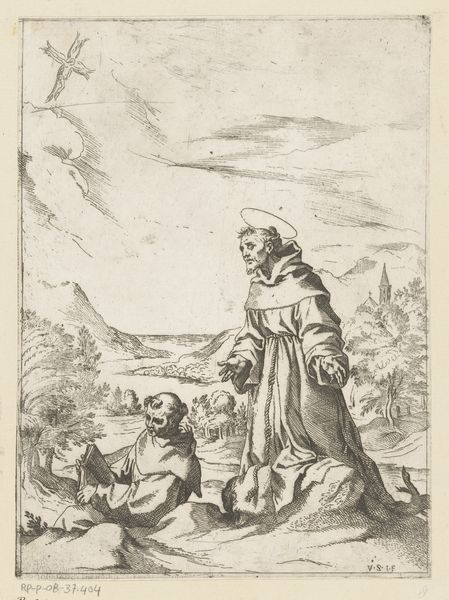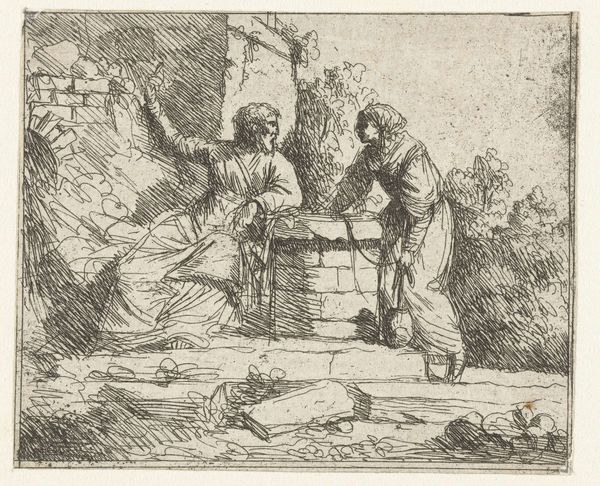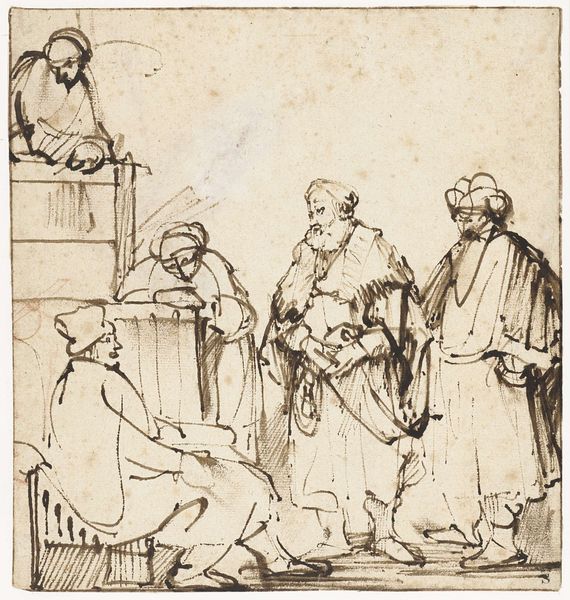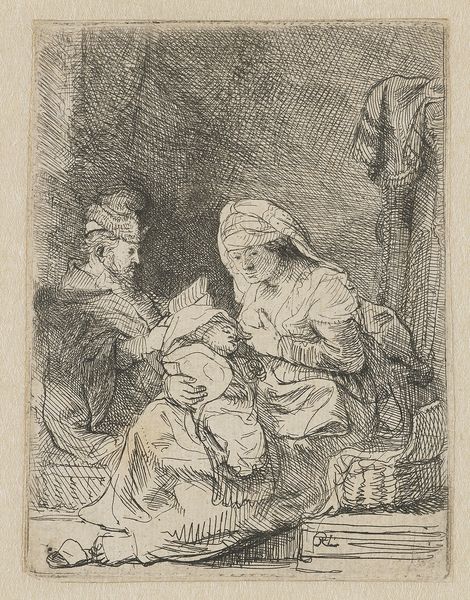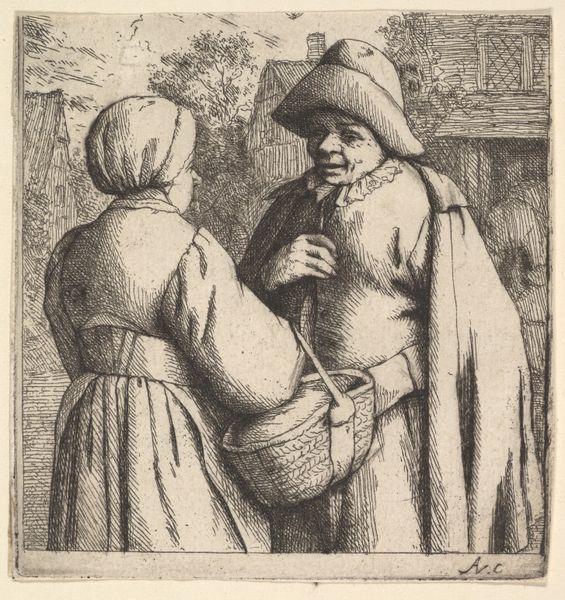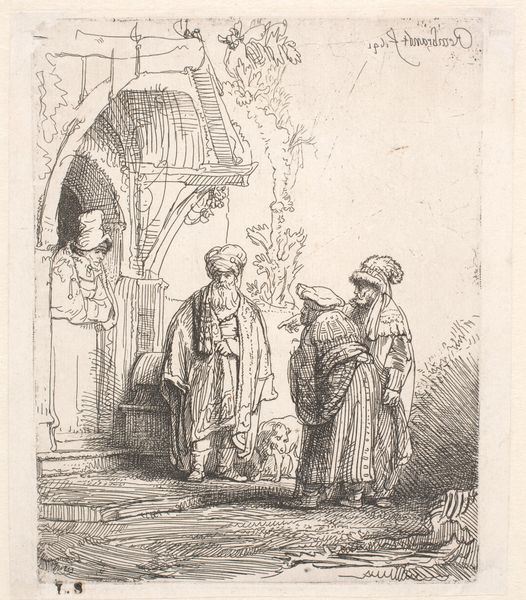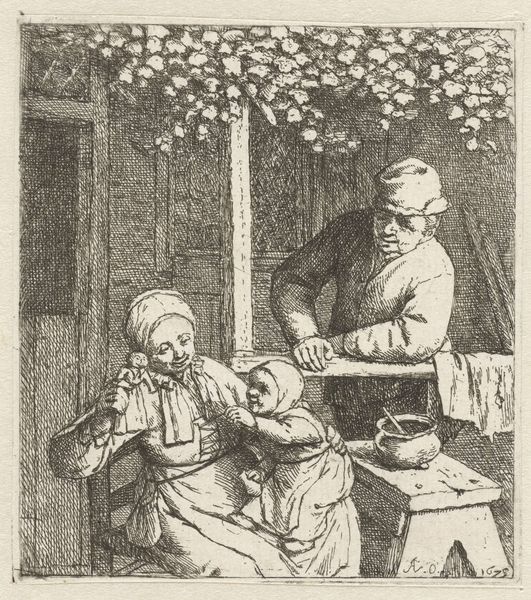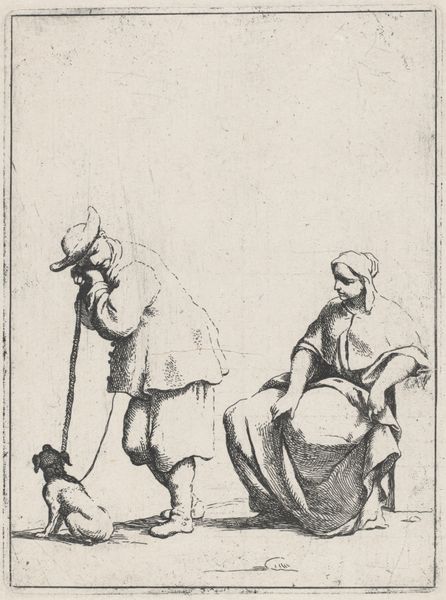
drawing, print, etching
#
portrait
#
drawing
#
dutch-golden-age
# print
#
etching
#
figuration
#
genre-painting
Dimensions: sheet: 4 1/16 x 3 1/8 in. (10.3 x 7.9 cm)
Copyright: Public Domain
Curator: Let's discuss "The Two Gossips," an etching and print created by Adriaen van Ostade sometime between 1625 and 1676. It currently resides at the Metropolitan Museum of Art. Editor: Immediately, I’m struck by the tonal range achieved through simple etched lines. It feels stark yet intimate, a glimpse into a candid moment. Curator: Ostade was a master of genre painting, and this piece offers a fascinating view into the social dynamics of the time, particularly concerning women and their roles. Editor: The composition itself is quite simple. Two figures dominate the foreground, engaged in what seems to be a rather intense conversation, given the direction of their faces. Note the background detail with figures underneath an arch—presumably others similarly preoccupied with life in the village. Curator: Indeed. Consider the attire of these women; it speaks volumes about class and status. The head coverings and simple dresses place them firmly within a specific social stratum. Is there something deeper being conveyed about the silent bonds formed under economic constraints or communal solidarity through social commentary in the neighborhood? Editor: I'm more drawn to the artist's careful use of line to delineate form and texture. Look at how Ostade suggests the rough fabric of their clothes or the weathered faces—details meticulously crafted using varied cross-hatching and directional strokes. It's quite exquisite when viewed closely. Curator: But to ignore the social context seems negligent. These women are positioned within a patriarchal society. How much autonomy do they genuinely possess, and how much does gossip serve as a subversive means of navigating that space? Editor: While I appreciate your sociopolitical reading, let us acknowledge that their expression is up for interpretation—is it worry or plotting? Beyond cultural narratives and status anxieties is simply form meeting content; in other words: art. The use of a low horizon and loose arrangement emphasizes the scene’s immediacy in real time. Curator: That's a valid observation; nonetheless, it is imperative to consider that our perspective of ‘gossip’ as frivolous is tainted by cultural connotations. This art provides a snapshot in time on female identity within male-dominated societies and their methods of negotiating these gendered landscapes. Editor: Fair point. There is something compelling here on two levels—formal and historical—and both intersect intriguingly. Curator: Precisely. Through Ostade's lens, we uncover various levels of existence, thereby pushing us toward introspection—regarding our histories as humans, genders, and identities. Editor: Ultimately, "The Two Gossips," then, is as fascinating on formal levels, but remains grounded in commentary about history and culture through subtle and complex compositional expression.
Comments
No comments
Be the first to comment and join the conversation on the ultimate creative platform.

